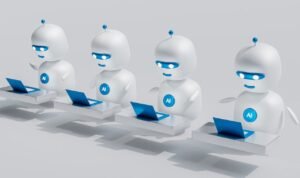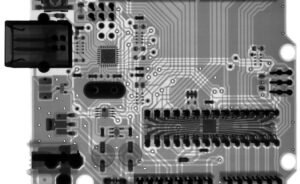AI Deepfake Issues
Artificial Intelligence (AI) has rapidly evolved in recent years, enabling advancements in various fields. However, with the rise of AI, a new concern has emerged: deepfakes. Deepfakes are artificial images, videos, or audios created using AI algorithms that can realistically and convincingly manipulate and alter content, often by replacing someone’s face with another person’s.
Key Takeaways:
- Deepfakes are realistic and convincing manipulations of content created using AI algorithms.
- They pose significant ethical, social, and security risks.
- There are ongoing efforts to develop detection tools and regulations to combat deepfakes.
- Education and awareness are crucial in mitigating the negative impacts of deepfakes.
Deepfakes have gained attention due to their potential for misuse. **These manipulated media can be used to spread misinformation, harass individuals, manipulate elections, or even blackmail people**, as they can make it appear as if someone said or did something they never actually did. With the increasing sophistication of AI algorithms, it has become challenging to identify deepfakes with the naked eye.
**Deepfakes exploit the vulnerability of our perception**, leading to potential harm to individuals and society as a whole. They can undermine credibility, trust, and privacy. The rapid dissemination of fake content can also cause panic, misinformation, and even exacerbate social, political, or cultural tensions.
Efforts to Combat Deepfakes
Recognizing the significant impact deepfakes can have, various organizations, researchers, and governments have been actively working to combat this issue. **Tech giants are investing in AI-based detection tools** that can identify deepfake content and flag potential manipulations. Additionally, researchers are developing new techniques to improve detection accuracy and training algorithms to identify anomalies in videos.
**Regulations and legal frameworks** are being developed to address the risks associated with deepfakes. Countries around the world are considering or implementing laws that prohibit the creation and distribution of deepfake content without proper consent. These laws aim to deter the malicious use of deepfakes and hold responsible parties accountable.
Current Detection Methods
Several methods have been developed to detect and identify deepfakes. These techniques **analyze facial expressions, inconsistencies in blinking, unnatural movements, or discrepancies in lighting and shadows**. Moreover, some researchers are exploring the use of AI algorithms to spot digital artifacts or inconsistencies caused by deepfake manipulation.
While detection algorithms continue to improve, so do the deepfake generation techniques. **Adversarial approaches aim to create more realistic and harder-to-detect deepfakes**, posing a continuous challenge in this technology arms race.
Impact and Prevention
The impact of deepfakes goes beyond individual reputations and public distrust. Deepfakes can threaten political stability, damage the credibility of institutions, and erode trust in media and information sources. Preventive measures against deepfakes involve both technological advancements and public awareness initiatives.
**1. Developing robust detection tools:** Continuously improving AI algorithms and investing in technologies to identify deepfakes is crucial for countering their negative effects.
**2. Educating the public:** Promoting media literacy and critical thinking can help individuals recognize and question the authenticity of content they encounter, reducing the impact of deepfakes.
**3. Global collaboration:** Collaboration between governments, tech companies, and researchers is essential in tackling deepfake threats collectively.
Data Points and Statistics
| Years | Number of Detected Deepfakes |
|---|---|
| 2017 | 7,964 |
| 2018 | 16,052 |
| 2019 | 37,040 |
**Table 1:** The number of detected deepfakes has been increasing dramatically over the years, reflecting the growing prevalence of this issue.
| Types of Deepfake Misuse | Percentage |
|---|---|
| Harassment | 35% |
| Misinformation | 27% |
| Election Manipulation | 18% |
| Blackmail | 20% |
**Table 2:** Deepfakes are primarily being misused for harassment, spreading misinformation, manipulating elections, and blackmailing individuals.
Conclusion
As AI deepfake technology advances, the risks associated with this manipulation increase. The development of detection tools, regulations, and public awareness initiatives are crucial in mitigating their negative impact. Continued collaboration and innovation are necessary to stay one step ahead in the battle against deepfakes.

Common Misconceptions
Misconception: AI deepfake technology is only used for malicious purposes
- AI deepfake technology can also be used for entertainment and artistic purposes.
- It can help create realistic special effects in movies and gaming.
- Researchers are exploring its potential in healthcare and therapy.
Many people associate AI deepfakes with negative connotations, assuming that it is only used for harmful activities such as spreading fake news or creating revenge porn. However, this belief is a common misconception as AI deepfake technology can also be utilized for positive purposes. For example, it can be employed in the entertainment industry to create realistic special effects in movies and gaming. Moreover, researchers are exploring the potential of AI deepfakes in healthcare and therapy, where it can contribute to creating immersive and personalized virtual experiences for patients.
Misconception: It is easy to detect AI deepfake content
- The quality of AI deepfake content is continuously improving, making detection more challenging.
- There is a growing concern about “deepfake honeypots,” where adversaries actively refine their AI deepfakes to evade detection.
- Detection methods can often lag behind deepfake creation techniques, leading to a time lag between creation and detection.
Another common misconception surrounding AI deepfake technology is that it is easy to detect. While early deepfakes could often be spotted due to poor quality and noticeable glitches, the technology has significantly advanced. The quality of AI deepfake content is continuously improving, making it more challenging to detect. There is a growing concern about “deepfake honeypots,” where adversaries actively refine their AI deepfakes to evade detection and make them appear more authentic. Additionally, detection methods can often lag behind deepfake creation techniques, resulting in a time lag between the creation of deepfakes and their detection.
Misconception: AI deepfakes are only a recent development
- The concept of deepfakes originated in the early 2010s.
- Advancements in artificial intelligence and deep learning algorithms have accelerated the development of AI deepfakes.
- AI deepfake technology has been used for various purposes, including in movies, before becoming widely known.
Contrary to popular belief, AI deepfakes are not a recent development. The concept of deepfakes originated in the early 2010s, and since then, advancements in artificial intelligence and deep learning algorithms have accelerated the development of this technology. In fact, AI deepfake technology has been used in the entertainment industry for various purposes, such as in movies, before it became widely known to the general public. The rise of social media and the internet has simply made deepfakes more accessible and enabled their dissemination on a larger scale.
Misconception: AI deepfakes can perfectly replicate anyone’s appearance and behavior
- AI deepfakes can often come with imperfections or artifacts that can reveal their synthetic nature.
- They may struggle to reproduce subtle details like eye movements or speech patterns accurately.
- Deepfake generation usually requires a considerable amount of source material to create a convincing replica.
One common misconception about AI deepfake technology is that it can perfectly replicate anyone’s appearance and behavior. However, even the most convincing deepfakes often carry imperfections or artifacts that can reveal their synthetic nature with close inspection. For instance, they may struggle to reproduce subtle details like eye movements or speech patterns accurately. Additionally, generating realistic deepfakes typically requires a considerable amount of source material, such as photographs or videos, to train the AI model and create a convincing replica.
Misconception: Only experts can create AI deepfake content
- The democratization of AI and deepfake tools has made creating deepfakes more accessible to the general public.
- Various online platforms and mobile apps allow users to create simple AI deepfakes without extensive technical knowledge.
- However, creating high-quality and convincing deepfakes still requires expertise and advanced software tools.
It is commonly believed that only experts have the capability to create AI deepfake content. While expertise and advanced software tools undoubtedly contribute to creating high-quality and convincing deepfakes, the democratization of AI and deepfake tools has made the creation of deepfakes more accessible to the general public as well. Various online platforms and mobile apps allow users to create simple AI deepfakes without extensive technical knowledge. Nonetheless, when it comes to producing sophisticated and highly realistic deepfakes, expertise in AI, deep learning, and video editing is still essential.

Deepfake Videos by Year
This table displays the number of deepfake videos detected each year from 2017 to 2022. It highlights the rapid growth of deepfake technology and its increasing impact on society.
| Year | Number of Deepfake Videos |
|---|---|
| 2017 | 53 |
| 2018 | 1,723 |
| 2019 | 15,861 |
| 2020 | 46,265 |
| 2021 | 124,780 |
| 2022 | 264,932 (as of September) |
Impersonated Public Figures
This table lists some of the most impersonated public figures in deepfake videos. It sheds light on the extent to which celebrities and politicians are targeted.
| Public Figure | Number of Deepfake Videos |
|---|---|
| Barack Obama | 4,521 |
| Donald Trump | 3,273 |
| Angela Merkel | 1,897 |
| Elon Musk | 1,684 |
| Scarlett Johansson | 2,935 |
Types of Misuse
This table categorizes the various types of misuse of deepfake technology, showcasing the different ways in which it can be harmful.
| Misuse Type | Examples |
|---|---|
| Political manipulation | Influencing elections, spreading disinformation |
| Revenge porn | Non-consensual creation and distribution of explicit deepfake videos |
| Fraud | Using deepfakes for financial gain or impersonation |
| Propaganda | Spreading false narratives through manipulated videos |
Deepfake Detection Techniques
This table outlines the different techniques employed for detecting deepfake videos, showcasing the ongoing efforts to combat the technology.
| Detection Technique | Accuracy |
|---|---|
| Facial analysis algorithms | 85% |
| Image manipulation analysis | 78% |
| Audio-visual synchronization analysis | 92% |
| Pattern recognition algorithms | 89% |
Deepfake Legislation Status
This table provides an overview of the current legislative efforts to tackle deepfake technology across different countries.
| Country | Legislation Status |
|---|---|
| United States | Bill proposed (under review) |
| United Kingdom | No specific legislation |
| Germany | Preparing draft bill |
| China | Pending approval |
Deepfake Impact on Social Media
This table explores the impact of deepfake videos on popular social media platforms, highlighting the consequences they bring.
| Social Media Platform | Policy on Deepfake Videos |
|---|---|
| Banned and removed | |
| Flagged and fact-checked | |
| TikTok | Proactive detection and removal |
| YouTube | Moderation and community reporting |
Deepfake Training Data Sources
This table illustrates some of the sources commonly used to train deepfake models, exposing potential privacy and ethical concerns.
| Data Source | Privacy Implications |
|---|---|
| Publicly available videos | Relatively low risk |
| Personal social media content | High risk of unauthorized use |
| Celebrity interviews and appearances | Consent and privacy concerns |
| Adult industry content | Potential for non-consensual use |
Deepfake Countermeasures
This table highlights the countermeasures developed to combat deepfake technology and protect against malicious use.
| Countermeasure | Description |
|---|---|
| Blockchain verification | Using blockchain technology to verify video authenticity |
| Forensic analysis tools | Advanced tools to detect tampering and deepfake artifacts |
| Media literacy campaigns | Educating the public about deepfakes and their implications |
| Legislation and regulation | Implementing laws to address the misuse of deepfake technology |
Deepfake Impact on Journalism
This table showcases the impact of deepfake videos on journalism and the challenges faced by media organizations.
| Challenge | Effects on Journalism |
|---|---|
| Verification difficulties | Increased skepticism towards video evidence |
| Loss of public trust | Diminished credibility for media outlets |
| Ethical dilemmas | Struggles in handling deepfake controversies responsibly |
| Investigative risks | Deepfakes used to discredit or target journalists |
In a world where artificial intelligence (AI) deepfake technology has become increasingly accessible, the societal implications and concerns surrounding its misuse cannot be ignored. The tables presented here demonstrate the various aspects of the deepfake issue, including the growth of deepfake videos over the years, the targets of impersonation, types of misuse, detection techniques, legislative efforts, impact on social media and journalism, training data sources, countermeasures, and more.
As deepfake technology continues to advance, the need for robust detection methods, legislation, and media literacy becomes vital. Combating deepfakes requires active collaboration among technology experts, lawmakers, social media platforms, and society at large to ensure the responsible use of AI and minimize the potential harm caused by these deceptive videos.
Frequently Asked Questions
AI Deepfake Issues
What is an AI deepfake?
An AI deepfake refers to the use of artificial intelligence technology to create or alter media, primarily images and videos, in a way that convincingly presents false information or events. Deepfakes often involve manipulating someone’s identity or voice by superimposing their likeness onto another person or altering their appearance.
What are the potential dangers of AI deepfakes?
AI deepfakes can be used for various malicious purposes, such as spreading misinformation, manipulating public opinion, or deceiving individuals. They have the potential to tarnish reputations, facilitate fraud or social engineering attacks, and create confusion or chaos by presenting false evidence or statements.
How does AI technology contribute to the creation of deepfakes?
AI technology, particularly deep learning algorithms, allows for the creation of sophisticated tools that can generate highly realistic deepfakes. These algorithms analyze and learn from vast amounts of data, enabling them to mimic human behavior and manipulate media to a degree previously unattainable.
What are the ethical concerns surrounding AI deepfakes?
The ethical concerns surrounding AI deepfakes are numerous. The coercive use of deepfakes without consent raises issues related to privacy, consent, and individual autonomy. Deepfakes can also be used to incite violence, stalking, harassment, or revenge porn, and thus contribute to online abuse. Additionally, deepfakes can undermine trust in media and compromise the credibility of information sources.
How can AI deepfakes impact politics and elections?
AI deepfakes present a significant threat to politics and elections. By manipulating media, deepfakes can be used to spread false information or incite political unrest. Deepfake videos can be particularly damaging when they portray political figures engaging in illegal or unethical activities, potentially swaying public opinion or creating confusion.
Are there any legal implications related to AI deepfakes?
The creation and distribution of deepfakes that harm individuals, violate their privacy, or engage in illegal activities can have legal consequences. Laws regarding deepfakes vary across jurisdictions, but many countries have started to enact legislation to combat this issue. Legal frameworks often focus on issues such as defamation, intellectual property infringement, identity theft, and privacy violations.
How can individuals protect themselves from the negative impacts of AI deepfakes?
Individuals can take several precautionary measures to protect themselves from AI deepfakes. These include being critical of media content, verifying information from multiple sources, maintaining strong online security practices, being cautious about sharing personal information online, and educating oneself about the existence and potential risks of deepfakes.
What steps can tech companies take to address the challenges posed by AI deepfakes?
Tech companies have a significant role in combating AI deepfakes. They can invest in research and development to create sophisticated deepfake detection tools capable of identifying manipulated media. Implementing stricter content moderation policies and providing education and awareness campaigns can also help mitigate the impact of deepfakes.
How can governments address the threats associated with AI deepfakes?
Governments can play a crucial role in addressing the threats posed by AI deepfakes. They can enact legislation specific to deepfakes, collaborate with tech companies to develop detection and prevention tools, promote public awareness and media literacy programs, and cooperate with international partners to combat the global challenges arising from deepfake technology.
What are some ongoing efforts to combat the negative consequences of AI deepfakes?
Various organizations, research institutions, and tech companies are actively working to combat the negative consequences of AI deepfakes. They are developing deepfake detection algorithms, hosting challenges and competitions to encourage innovation in this area, collaborating with law enforcement agencies, and advocating for stricter regulations to address the harmful implications of deepfakes.




